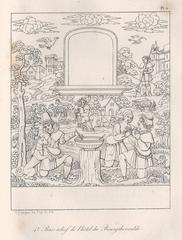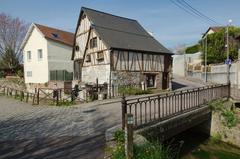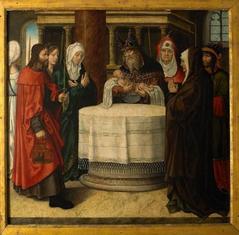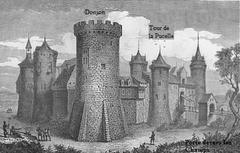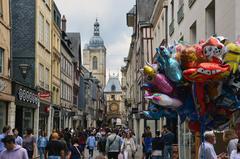Quai du Havre Rouen: Visiting Hours, Tickets, and Historical Sites Guide
Date: 04/07/2025
Introduction
Quai du Havre, situated on the right bank of the Seine in Rouen, Normandy, is a dynamic riverfront destination where history, culture, and contemporary urban life converge. Once integral to Rouen’s Gallo-Roman roots and its rise as a strategic river port, the quay today offers an engaging blend of historical architecture, scenic promenades, cultural events, and modern amenities (Visiter Rouen, HAROPA Port Rouen). Whether you’re interested in exploring Rouen’s layered past, attending lively festivals, enjoying riverside dining, or simply soaking in views of the Seine, this guide provides comprehensive information to help you make the most of your visit.
Table of Contents
- Historical Overview
- Cultural and Social Significance
- Practical Visitor Information
- Signature Events & Local Experiences
- Safety, Accessibility, and Visitor Services
- Frequently Asked Questions (FAQ)
- Conclusion and Call to Action
- References
Historical Overview
Gallo-Roman Foundations and Early Urban Role
Quai du Havre traces its origins to Rouen’s ancient past as Rotomagus, the second most important city in Roman Gaul. The Seine served as a vital thoroughfare for commerce and cultural exchange, with the area that is now Quai du Havre acting as a key transshipment point between the Roman Empire and Britannia (en.visiterouen.com, haropaport.com).
Medieval Expansion and Maritime Prosperity
After surviving Viking invasions in the 9th century, Rouen’s port—encompassing the modern Quai du Havre—was rebuilt and flourished. The quay became a hub for seagoing trade with Italy and Northern Europe, and the riverfront was developed with warehouses, merchant houses, and customs offices (haropaport.com).
Industrialization and Urban Transformation
The 19th century saw rapid industrialization, marked by the arrival of steamships, major navigation improvements, and the expansion of port infrastructure (haropaport.com). By the late 1800s, Rouen was among France’s busiest ports. The area around Quai du Havre bustled with customs offices, shipping companies, and hotels (gralon.net). Despite wartime destruction in the 20th century, post-war reconstruction ushered in modernist architecture and new transport links.
Modernization and Integration into HAROPA
From the 1960s onward, modernization continued with the construction of new quays and navigational channels, accommodating larger vessels and facilitating global trade. In 2012, the integration of Rouen, Le Havre, and Paris ports into the HAROPA group reinforced Quai du Havre’s strategic importance in European logistics (haropaport.com).
Urban Renewal and Contemporary Development
Today, Quai du Havre represents Rouen’s commitment to urban renewal. Historic customs buildings stand alongside contemporary offices, hotels, and vibrant public spaces. Recent projects have enhanced pedestrian access, landscaping, and cultural venues, creating a welcoming riverfront for both residents and visitors (normandielovers.fr, metropole-rouen-normandie.fr).
Cultural and Social Significance
Quai du Havre is more than a historic riverfront; it’s a living hub for community, culture, and social life. The quay hosts associations, markets, seasonal events, and festivals that celebrate Rouen’s maritime heritage and local traditions. Its proximity to the medieval city center, half-timbered houses, and Gothic landmarks like Notre-Dame Cathedral makes it a gateway for exploring Rouen’s rich heritage (themodernpostcard.com).
Practical Visitor Information
Visiting Hours and Accessibility
- Quai du Havre is accessible 24/7 as an open public space.
- No admission fee to stroll the promenade or enjoy the riverfront.
- Restaurants, cafés, and shops typically operate from 9:00 AM to 11:00 PM; hours may extend during festivals and summer.
- The quay is wheelchair accessible, with smooth pathways and ramps (Visiter Rouen).
Guided Tours and Events
- Walking tours highlighting the port’s history are available through Rouen’s tourism office.
- River cruises depart from the quayside and are particularly popular during events.
- Check official event calendars for festival schedules and special guided activities (Visiter Rouen).
Nearby Attractions
- Rouen Cathedral: A masterpiece of Gothic architecture.
- Gros Horloge: The city’s astronomical clock and a gateway to the old town.
- Place du Vieux-Marché: Historic market square and site of Joan of Arc’s execution.
- Musée des Beaux-Arts: Art museum featuring Monet and Impressionists.
- La Cité Immersive Viking: An interactive museum on Rouen’s south bank.
Signature Events & Local Experiences
Major Events
- Rouen Armada: Every five years, tall ships dock along the Seine, transforming the quay into a festive maritime village (France Voyage).
- Rouen sur Mer: Summer festival with beach activities, music, and food.
- Les Terrasses du Jeudi: Weekly open-air concerts in July.
- Fête du Ventre and Rouen à Table!: October food festivals celebrating Normandy cuisine.
- Foire Saint-Romain: Autumn funfair along the riverfront.
Dining, Nightlife, and Shopping
- Riverside terraces and bistros offer views of the Seine and city skyline.
- Local markets at Place Saint-Marc and Place du Vieux-Marché.
- Food trucks and pop-up bars during summer and festivals.
Outdoor Activities
- Seine à Vélo: Cycling route along the riverbanks.
- Jogging, rollerblading, and picnicking on the promenade.
Art and Architecture
- Notable building at 70, quai du Havre: Unique rounded window frames (PSS Archi).
- Public art installations and architecture festivals animate the quays throughout the year.
Safety, Accessibility, and Visitor Services
Safety
- The quays are well-lit and generally safe.
- Exercise caution at pedestrian crossings; traffic and rail lines border the quay (Actu.fr).
- Be mindful of crowds during major events.
Accessibility
- Wheelchair-friendly paths and ramps.
- Tourism & Handicap certification at local information offices.
- Accessible public transport and bike rentals available.
- Support services for hearing and vision-impaired visitors (APEDAHN).
Transport and Parking
- Well-served by bus and tram; main train station is 1.5 km away.
- Street and public parking available; can be limited during events.
- Cycling and walking are encouraged along the riverfront.
Frequently Asked Questions (FAQ)
Q: Are there entrance fees for Quai du Havre?
A: No, the quay is an open public space. Some events or attractions may require tickets.
Q: What are the visiting hours?
A: The promenade is accessible 24/7 year-round; businesses typically open 9:00 AM–11:00 PM.
Q: Is the area wheelchair accessible?
A: Yes, with ramps, smooth walkways, and accessible facilities.
Q: How do I get there?
A: Walking from the city center or train station, by bus, tram, or bike. Parking is nearby but limited during events.
Q: When is the best time to visit?
A: Spring and autumn for mild weather; summer for festivals and outdoor activities.
Q: Are guided tours available?
A: Yes, walking and boat tours can be booked through the tourism office.
Conclusion and Call to Action
Quai du Havre encapsulates the spirit of Rouen’s enduring relationship with the Seine—a vibrant blend of history, culture, and modern urban life. Whether you’re drawn by its historical significance, festive events, or riverside leisure, Quai du Havre offers a memorable experience for every visitor. Plan your trip by checking event schedules, booking tours, and leveraging accessible amenities.
Enhance your visit by downloading the Audiala app for guided audio tours, event alerts, and insider tips. For the latest updates, follow Rouen’s tourism channels and explore related guides on Normandy’s top attractions.
References
- Visiter Rouen
- HAROPA Port Rouen
- Normandie Lovers
- Travel France Blog
- The Modern Postcard
- Gralon
- Metropole Rouen Normandie
- Normandie Tourisme
- Visiter Rouen - Events
- PSS Archi
- Actu.fr
- APEDAHN
